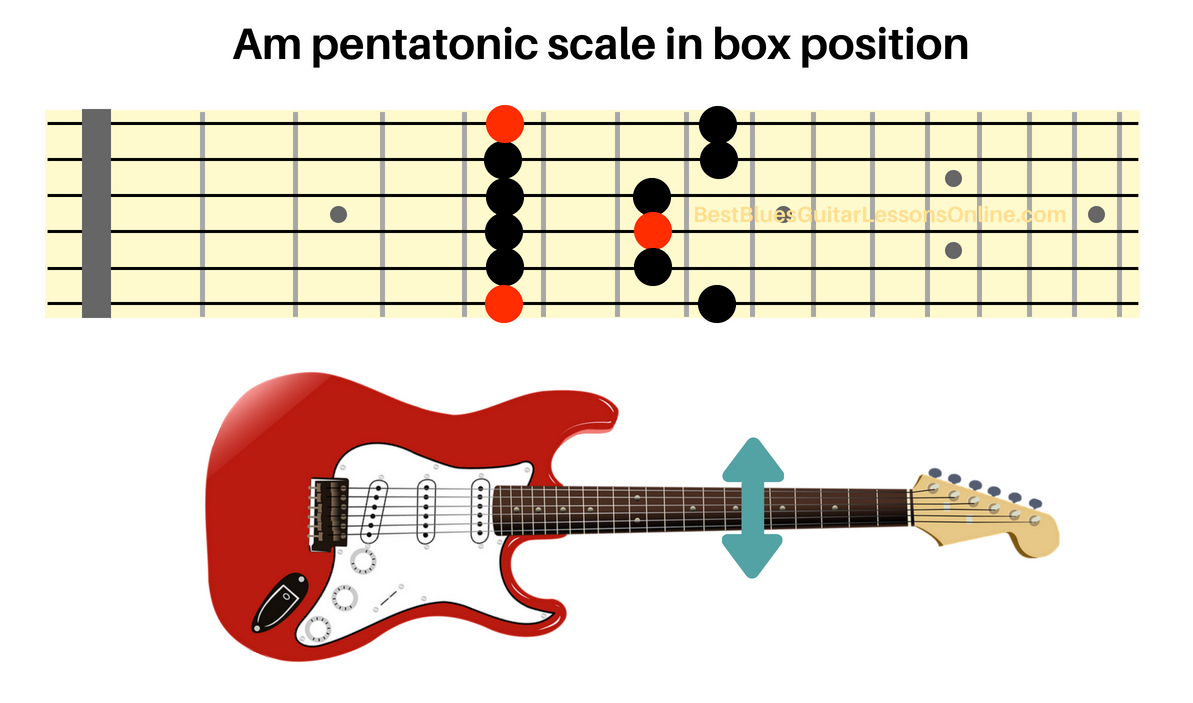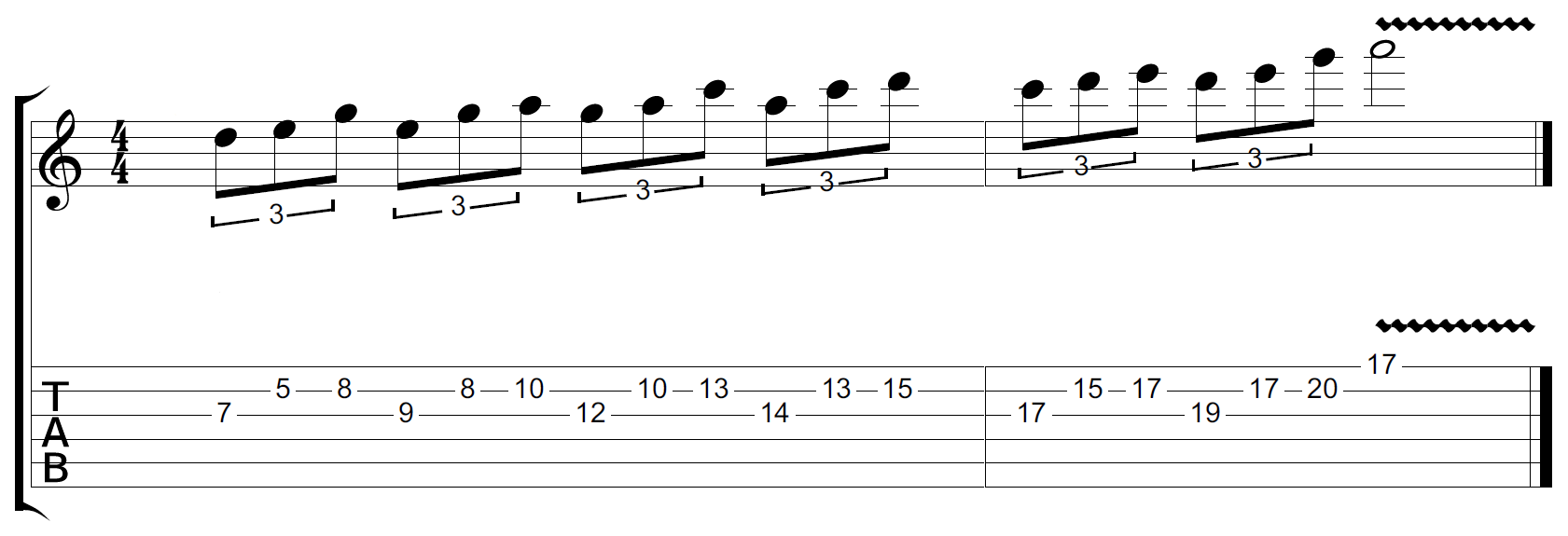The Ultimate Guitar Fretboard Memorization Guide
How To Move Freely Over The Entire Fretboard With Horizontal Guitar Scales
By Antony Reynaert
When it comes to improvising on guitar, there is only a tiny percentage of guitarists that can express themselves freely through their instrument. The biggest problem guitar students face is not knowing how to use the entire neck of the guitar. Lacking this crucial knowledge leaves you blindfolded in your visualization of how the fretboard is structured.
How To Memorize The Guitar Fretboard So You Don’t Get Stuck During Your Blues Solos
How you visualise and memorize the fretboard are extremely important components that determine how fluently you are able to use the fretboard. There are essentially two ways you can memorize your guitar scales.
The sad truth is that almost all beginner guitarists start with the first way of fretboard memorization, but almost never reach the point of total control over their fretboard.
If I would ask you what scale you’ve learned first on guitar, in most cases I would receive the answer: "the box position of the minor pentatonic scale". Don’t get me wrong, this is absolutely perfect. But there is a huge disadvantage that comes from limiting yourself to only learning scale positions. Too many people are caught up in memorizing the guitar fretboard in boxes and stay trapped inside them because of this, not knowing how to break out or how to use the entire fretboard while improvising on guitar. This is exactly why you need the look at the fretboard in two ways:
The first way of looking at the guitar fretboard happens in a vertical manner. This way we divide the fretboard basically in different boxes:

The second way of looking at your scales, and here lays the real gold, uses a horizontal approach of the guitar. What happens here is that instead of playing for example your Am pentatonic scale in one of the five positions, you lay out the 5 notes of the scale on one string.
Learning your scales horizontally on the guitar, on every string is the ultimate method to break out of your boxes and move freely to any place on the guitar fretboard.

The first step is to actually learn and memorize your fretboard in both ways: the vertical approach (scales in boxes) and the horizontal approach (scales on one string). Once you’ve done that it is of course necessary to use the scales in a more musical context. So let’s take a closer look on how to implement this idea into your blues guitar solos.
Practical Example One: Using Guitar Scale Runs To Increase Tension In Your Blues Solos
The great thing about learning your scales on one string is that this idea is easily applicable into a musical context. We can put the whole idea into one practical example: a blues guitar scale run.
You can think of a scale run as a highway for your fingers to instantly move across the entire fretboard in a musical way. A lot of the time a run happens from the lower notes to the higher notes on the neck to build up the tension and to move towards a climactic point.
Take a look for example at this scale run. It makes use of the Am pentatonic scale on the G and the B string:
In the video below you see me explaining this blues guitar scale run to a student. If you want to get a hang of how this sounds and how this fits into a blues solo, I suggest to take a look at the video below:
The most important point you have to realize is that this whole scale run idea is a strategy rather than a lick you just copy and learn. It is important that you are able to come up with your own scale runs during improvisation by using guitar scales horizontally. Here are the notes of the Am pentatonic scale on both the G string and B string that can be used in order to form scale runs:

Practical Example Two: Connecting Licks For Melodic Blues Solos
What you don't want to do when you try to create a melodic piece on the guitar is to just play a random lick in one of the 5 boxes of the pentatonic scales, then go to another position and play another random lick. This is what a lot of guitarists do when soloing, and it is the root reason why their guitar solos sound unappealing.
A great way to make your phrasing better is this: First, take a lick you already know out of one of the 5 positions of the pentatonic scale. Secondly, take a second lick from another position of the pentatonic scale and try to connect them by using the horizontal guitar scales on one string. The end goal is to 'glue' two random licks together into one very melodic phrase.
It is crucial to transition your standard licks into melodic phrases if you want to reach advanced lead skills. In the following video I’ll teach this in a step by step manner. By watching the video you can get a clear hang on how to execute this idea:
What Is The Next Step To Advance Your Blues Guitar Solos
 Now that you’ve acquired the knowledge about what is the best way to memorize the fretboard, it is time to take your soloing skills another step forward. To help you in your road to becoming the blues guitar player you’ve always wanted to be, I wrote a free guide to give you much more tips to transform your current guitar solos into highly professional sounding blues solos. Download your free Advanced Blues Guitar Soloing Guide here: Advanced Blues Guitar Soloing Guide
Now that you’ve acquired the knowledge about what is the best way to memorize the fretboard, it is time to take your soloing skills another step forward. To help you in your road to becoming the blues guitar player you’ve always wanted to be, I wrote a free guide to give you much more tips to transform your current guitar solos into highly professional sounding blues solos. Download your free Advanced Blues Guitar Soloing Guide here: Advanced Blues Guitar Soloing Guide
Start the Essential Blues Guitar Soloing Course now and break out of your old habits.

